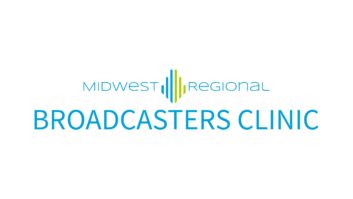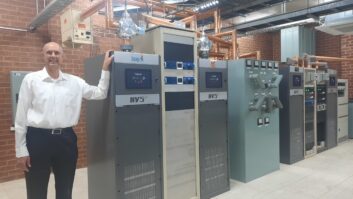
This article originally appeared in TV Technology.
SEATTLE — The transition of the Broadcast Auxiliary Service, now several years completed, could be viewed by many who it affected as an enormous visit from Santa Claus. After all, something around a billion dollars worth of microwave equipment and its installation was delivered free to broadcasters to allow them to use narrower channels in the 2 GHz band. (Channels were narrowed from 18 to 12 MHz.) The freed up spectrum was for Sprint, which paid the BAS bill.
Also having a sleigh with eight tiny reindeer land on their roofs were primary suppliers MRC (now Vislink), Nucomm and RF Central (both now part of Integrated Microwave Technologies), NSI, Troll and GMS, as well as integrators, tower folks and truck builders.
It was not an entirely smooth process, especially when lawyers got involved over tax questions. It took years longer than anticipated, and required affected broadcasters to undergo a leap-of-faith that the digital radios they would receive would provide the reliability that their trusted — ;if long-in-the-tooth — analog gear had provided. Most television markets were already using the new digital BAS a couple of years into using their narrowed channels when the Anchorage, Alaska, market finally tuned-over to the new band plan in the summer of 2010, signaling the end of the transition.
A LEVEL PLAYING FIELD
So how’s it going?
“We’re very happy with the way it works,” said Karl Sargent, chief engineer at California Oregon Broadcasting Inc. Though COBI operates in smaller markets, two stations in the Eugene, Ore., market and two in the Medford/Klamath Falls, Ore., market, the company’s BAS equipment replacement was the second largest in the nation, due to 20 translators spread over southern Oregon and northern California. Sargent estimated all of COBI’s 2 GHz microwave paths sum to 2,400 miles.

WPSD(TV) received a supply of RF filters annually.
“It not only provides multiple ENG pickups throughout our coverage area, but switching from analog allowed us to provide a lot more bandwidth for the ancillary services that we do, such as data, and IP links,” Sargent said. “We have a data link, T1 of data available, plus we have multiple ASI. We can do a lot more remote monitoring. It’s been a really good thing.”
Greg Thies, news operations manager at Seattle’s KING(TV) said one of the benefits of replacing BAS equipment in such a short period of time is that it is “putting everybody on the same playing surface.” As market frequency coordinator, “I’m the above-one-gig guy.” He said replacement of analog gear — some dating back as much as 30-plus years — with digital equipment all of the same vintage, has paid operational dividends.
“It just puts everybody at the same point technically, we are all capable of doing the same things, working within the same parameters. A lot of what we do is all ‘gentlemen handshake’ stuff, based on our frequency coordination. We’re all able to operate and stay out of each other’s way, or help each other in cases where we need to, such as a pool situation.”
Joey Gill, chief engineer at WPSD(TV) in the Paducah, Ky./Harrisburg, Ill./Cape Girardeau, Mo. market, said there’s a huge advantage to having a fresh flush of microwave gear when it comes to maintenance. “Rather than stock parts and spares for equipment acquired over 30 or more years, it allows us to keep one stock of parts, one stock of spares,” he said.
That said, Gill credits the station’s maintenance people with the large amount of replacement gear it received. “One reason it was so big was because we had a strong maintenance staff that kept gear going for 30 years,” he said. “When [the inventory checkers] showed up, if the power light would come on, you got a new one.”
Gill pointed out that not all the new gear they received were microwave transmitters and receivers. His station has two microwave towers located so remotely that the only utility they have is power, which required control telemetry to the sites to replace the 455 MHz data links they were using. “If I had a tower an hour away that had north, south, east and west antennas on it, and we had a train wreck south of that site, then I would need to select the south antenna to receive video from the microwave truck at the story,” he said.
One of COBI’s 2 GHz Relocation Tower Sites at Gold Beach, Ore.
Sprint engineers came up with a better solution, according to Gill. “They paid for HughesNet data dishes at these sites, and got all of our control on IP-based control,” he said. “And not only did they put in the HughesNet dishes, but they also paid for five years of data. They paid the bill for us for five years. It was cheaper for them to do that than to put in an antiquated terrestrial, 455 MHz telemetry link back in.”
FILTERS FOR FREE
One annual ongoing gift-giving to BAS relocation stations are RF filters. The filters are needed to strip off all out-of-band RF, especially important for the BAS channels adjacent to frequencies occupied by cellular operations.
About once a year AT&T, Sprint, T-Mobile and Verizon send the stations papers to fill-out for filters. “I now have a stack of filters that would flatten a pickup truck’s springs,” said Gill. He finds the filters built into his digital radios adequate to the task, but KING(TV)’s Thies suggests hanging onto the filters sent each year.
“You never know when you might need to have that filter, and gosh, why didn’t I take the filter when they were offering it to me for free?”
Though the cellular backpacks are all the rage for liveshots currently, Thies said there’s nothing like a signal path where you don’t have to rely on someone else’s infrastructure, especially in a natural or other disaster. “If you’re providing a service and it’s an important informational service, then you need the reliability,” he said. “People not only tune in our broadcast channels, but come to our digital site for important information. So it’s important for us to have that capability to provide the service.”







